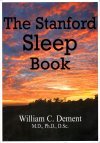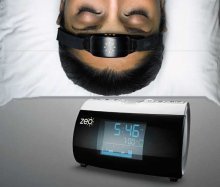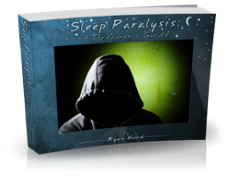
| Connect & Subscribe |
Delayed Sleep Phase Syndrome Brochure
An Outreach Project by Nelson Estrada | Return To Outreach Projects 2010
The following is a brochure created for Stanford Sleep and Dreams. If it is difficult to read using the images, you may view the full text here.
Also feel free to download this brochure for distributional or general information purposes. Please refer to our privacy policy for our relevant disclaimers.
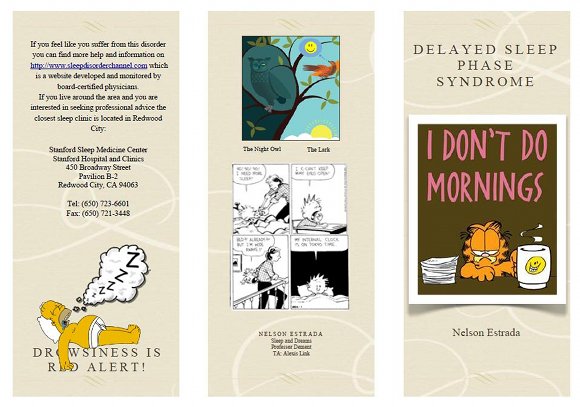
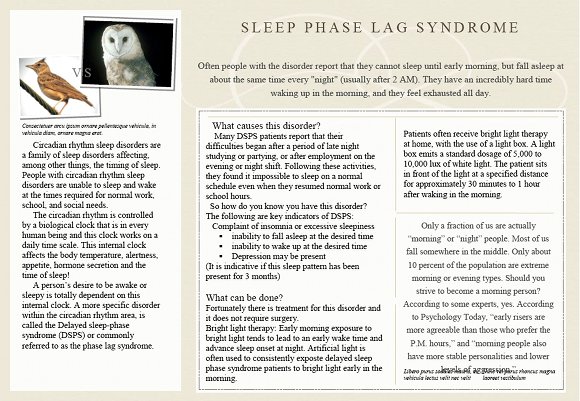
Delayed Sleep Phase Syndrome
Circadian rhythm sleep disorders are a family of sleep disorders affecting, among other things, the timing of sleep. People with circadian rhythm sleep disorders are unable to sleep and wake at the times required for normal work, school, and social needs.
The circadian rhythm is controlled by a biological clock that is in every human being and this clock works on a daily time scale. This internal clock affects the body temperature, alertness, appetite, hormone secretion and the time of sleep!
A person's desire to be awake or sleepy is totally dependent on this internal clock. A more specific disorder within the circadian rhythm area, is called the Delayed sleep-phase syndrome (DSPS) or commonly referred to as the phase lag syndrome.
SLEEP PHASE LAG SYNDROME
Often people with the disorder report that they cannot sleep until early morning, but fall asleep at about the same time every "night" (usually after 2 AM). They have an incredibly hard time waking up in the morning, and they feel exhausted all day.
What causes this disorder?
Many DSPS patients report that their difficulties began after a period of late night studying or partying, or after employment on the evening or night shift. Following these activities, they found it impossible to sleep on a normal schedule even when they resumed normal work or school hours.
So how do you know you have this disorder? The following are key indicators of DSPS:
(It is indicative if this sleep pattern has been present for 3 months)
What can be done?
Fortunately there is treatment for this disorder and it does not require surgery. Bright light therapy: Early morning exposure to bright light tends to lead to an early wake time and advance sleep onset at night. Artificial light is often used to consistently exposte delayed sleep phase syndrome patients to bright light early in the morning.
Patients often receive bright light therapy at home, with the use of a light box. A light box emits a standard dosage of 5,000 to 10,000 lux of white light. The patient sits in front of the light at a specified distance for approximately 30 minutes to 1 hour after waking in the morning.
Only a fraction of us are actually "morning" or "night" people. Most of us fall somewhere in the middle. Only about 10 percent of the population are extreme morning or evening types. Should you strive to become a morning person?
According to some experts, yes. According to Psychology Today, "early risers are more agreeable than those who prefer the P.M. hours," and "morning people also have more stable personalities and lower levels of aggression."
If you feel like you suffer from this disorder you can find more help and information on http://www.sleepdisorderchannel.com which is a website developed and monitored by board-certified physicians. If you live around the area and you are interested in seeking professional advice the closest sleep clinic is located in Redwood City:
Nelson Estrada
Stanford Sleep Medicine Center
Stanford Hospital and Clinics
450 Broadway Street
Pavilion B-2
Redwood City, CA 94063
Tel: (650) 723-6601 Fax: (650) 721-3448
The Night Owl
The Lark
NELSON ESTRADA
Sleep and Dreams
Professor Dement
TA: Alexis Link
About This Site
Welcome! This site is continuously being created by students of Dr. William C. Dement's Sleep And Dreams course at Stanford University.
We made this site as a call to action for people all over the world to live healthier, happier, safer, and more productive lives by learning about their own sleep. We have faith that reading the information provided on this site will motivate you to be smart about your sleep deprivation and strategic about your alertness in order to live life to your fullest, most energetic potential.
In fact, we challenge you to do so! What do you say, are you up for the challenge?
Interviews With Sleep Specialists: Insights Into the Worlds of Sleep Medicine & Sleep Business
America's Most Dangerous Disorder: What Is Sleep Apnea Doing To Your Sleep?
Sleep Debt: How Much More Will You Achieve When You Reduce Yours?
The Stages Of Sleep: The Journey Through The Night
Delayed Sleep Phase: You Want To Sleep But You're Not Tired Yet
Paralyzed at Night: Is Sleep Paralysis Normal?
Sleep In Words: Smart, Strange, and Funny Quotes About Sleep
Sleep Disorders In Children: What's Keeping Your Child From A Full Night's Rest?
Attacks of Pavor Nocturnus (a.k.a. Sleep Terrors, Night Terrors, or Incubus Attacks)
The Stanford Sleep Book
Dr. Dement's pioneering textbook has been the core text for Sleep and Dreams since 1980, but it has just recently been made available to the wider public for the first time.
In it you'll find a more detailed account of the most important things you need to know about sleep, alertness, dreams, and sleep disorders. Studies, statistics, plus plenty of Dr. Dement's classic anecdotes painting the history of sleep medicine.
Preface | Intro | Contents | Get A Copy
More Sleep Resources
The Zeo
A revolution in personal sleep tracking, the Zeo is a wireless headband that transmits your brainwaves in realtime to a dock (pictured here) or your smartphone. The result? You can wake up and see exactly what stages of sleep you were in during the night! Unprecedented personalized sleep knowledge.
Sleep Paralysis: A Dreamer's Guide
Ever woken up paralyzed? A surprising number of us have, believe it or not. But few know the actual causes of this phenomenon, and fewer still how to exert control over it. Dream researcher and sleep paralysis expert Ryan Hurd shares breakthrough insights into how to do just that.
Important Disclaimer
Please Note:
The information found on this page and throughout this site is intended for general information purposes only. While it may prove useful and empowering, it is NOT intended as a substitute for the expertise and judgments of healthcare practitioners.
For more info, see our
Terms of Use.







